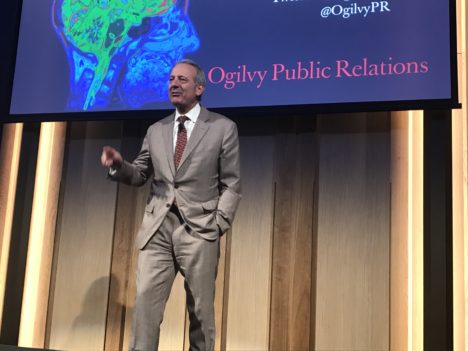Science backs up the power of the narrative in convincing an audience, says Ogilvy PR global chairman
Narrative storytelling is the key to persuading an audience, with science backing this up, Ogilvy PR global chairman Christopher Graves told a room full of PR professionals.
Speaking at today’s PRIA conference, Graves said: “As communicators you know if something is as dull as dishwater and entirely rational, you’re not going to move anyone,” guiding audiences through behaviour and marketing sciences that explain the way humans make decisions and process information.
Graves said effective narrative is “immersive” and “strips away that thread of identity and allows you to imagine what it maybe like to take the other side, take the other view”.


